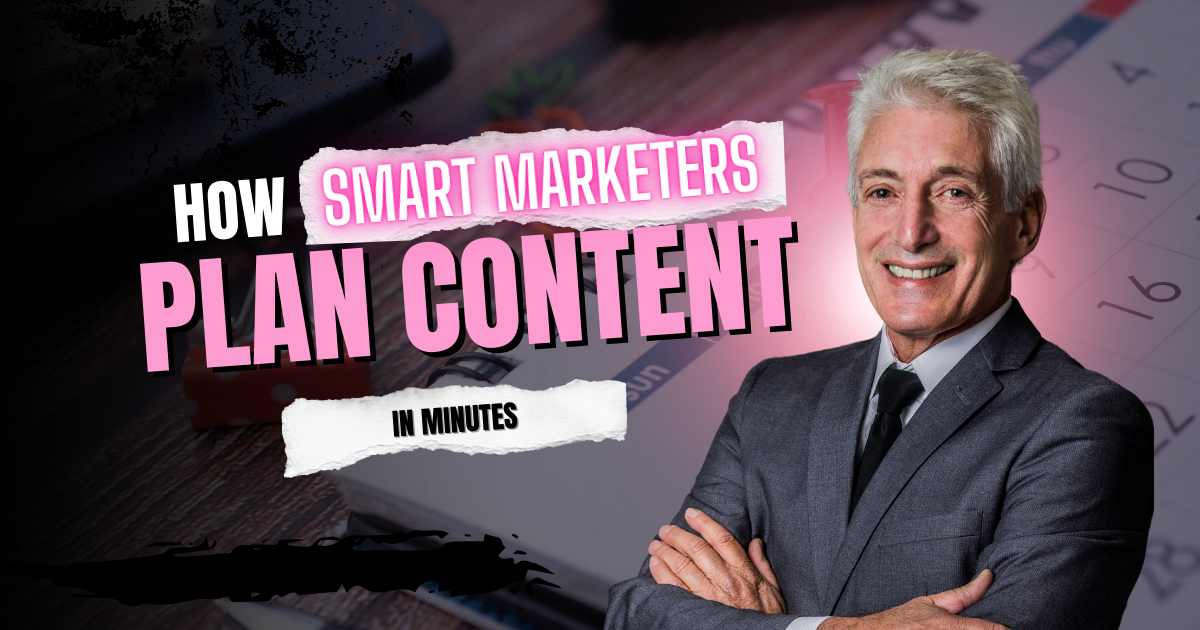Managing social media can be overwhelming from planning ideas and writing captions to scheduling posts at the right time. AI-powered content calendars simplify this process, helping you plan, create, and schedule content efficiently.
Why Every Brand Needs a Social Media Content Calendar?
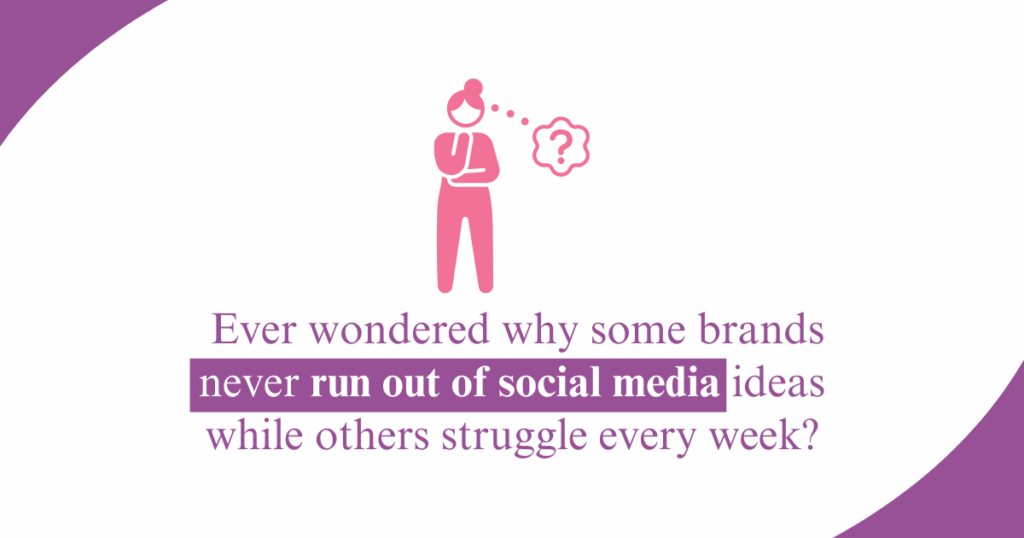
It keeps your brand consistent, your messaging on track, and your content aligned with upcoming events, product launches, or seasonal campaigns. For small businesses, marketers, and creators alike, it’s a lifesaver.
This is exactly why AI tools have become game-changers. They don’t just save you time—they make the process smarter. With AI, you can:
- Generate content ideas instantly based on your niche.
- Auto-write captions and hashtags tailored to your audience.
- Schedule posts at optimal times for maximum engagement.
- Organise everything visually in a drag-and-drop calendar.
- Even analyse what’s working so you can refine your strategy.
Instead of spending hours planning, AI lets you build a content calendar in minutes without sacrificing creativity or quality. It’s like having a digital assistant who not only handles the heavy lifting but also gives you data-driven insights.
In this guide, we’ll explore what a content calendar really is, why it matters, and most importantly, how to use AI tools to build one that works for you. Whether you’re a solo entrepreneur or running a brand team, this approach will help you post with consistency, creativity, and confidence.
What Is a Social Media Content Calendar?
Before we dive into AI and fancy tools, let’s clear the basics: what exactly is a social media content calendar?
At its core, a content calendar is simply a schedule. It’s a structured plan that tells you:
- What you’re posting → the content idea, image, video, or caption.
- Where you’re posting → Instagram, TikTok, Facebook, LinkedIn, X (Twitter), Pinterest, or others.
- When you’re posting → the exact time and date.
- Why you’re posting → whether it’s to boost awareness, drive sales, or just engage your community.
Think of it as a visual blueprint of your brand’s online activity. It stops you from guessing day-to-day and instead gives you a clear path forward.
Why It Matters So Much
Without a calendar, social media feels reactive—you post only when inspiration strikes (or when guilt kicks in because you haven’t posted in a week). That inconsistency can confuse your audience and make your brand look unreliable.
A content calendar changes that by:
- Helping you stay consistent with posting frequency.
- Making sure your messaging aligns with campaigns, holidays, and launches.
- Saving you the stress of “last-minute posting.”
- Giving your team (or just you) a shared plan to follow.
For example:
Imagine you’re a small boutique clothing store. Without a calendar, you might miss posting about Valentine’s Day promotions until it’s too late. With a calendar, you’d have it planned weeks in advance—complete with styled product photos, captions, hashtags, and scheduled posts that go out automatically.
The Old Way vs. The New Way
Traditionally, marketers built calendars in Excel sheets or even hand-written planners. That works… but it’s time-consuming, hard to keep updated, and doesn’t adapt to fast-moving trends.
Now, with AI tools, you don’t just plan ahead—you plan smarter. AI can tell you the best times to post, suggest content formats for each platform, and even help generate captions or visuals. It’s not about replacing your creativity; it’s about supporting it with structure and insights.
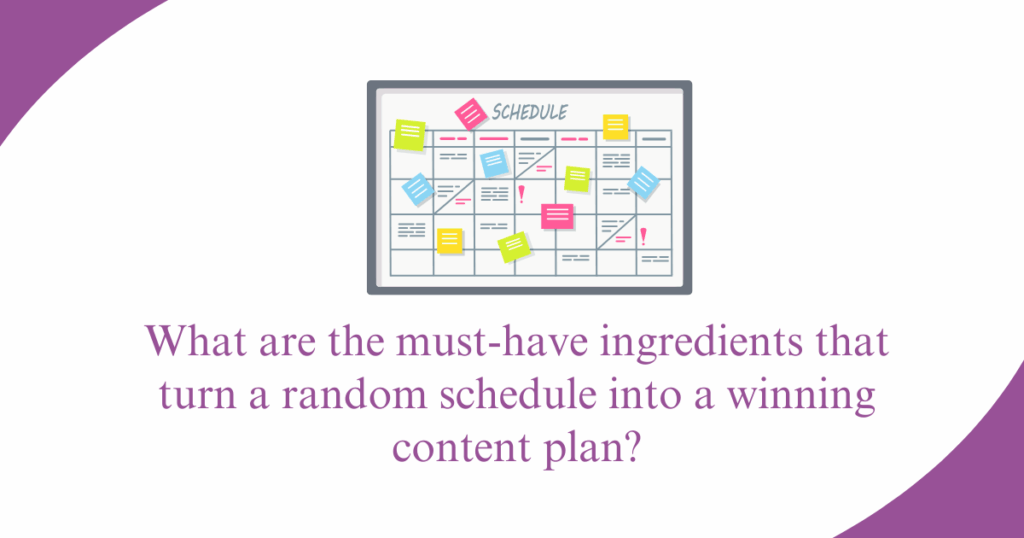
The Key Elements of a Strong Content Calendar
A calendar isn’t just a grid with dates—it’s a living framework that keeps your social media strategy organised, consistent, and purposeful. Before layering AI into the process, let’s look at the core building blocks every strong content calendar should have.
1. Content Themes and Pillars
Your posts shouldn’t be random. A good calendar begins with content pillars—the main topics your brand wants to focus on.
Examples:
- A fitness coach → workouts, nutrition tips, motivation.
- An online shop → new arrivals, styling tips, customer stories.
- A B2B software brand → product features, case studies, industry insights.
These pillars help ensure your feed stays balanced and consistent, instead of repetitive or scattered.
2. Posting Frequency and Platforms
Each platform has its own rhythm. Posting three TikToks a day may work, but the same volume on LinkedIn could overwhelm your audience. A solid calendar defines:
- How often to post per platform.
- Which platforms are priority (where your audience is most active).
- How posts connect across channels (e.g., repurposing a TikTok video for Instagram Reels).
3. Campaigns and Key Dates
Marketers don’t just post—they plan around moments that matter. Your calendar should highlight:
- Product launches
- Sales periods (Black Friday, Boxing Day, seasonal clearances)
- Holidays and cultural events (Christmas, Pride Month, International Women’s Day)
- Brand anniversaries or milestones
This ensures content feels timely and relevant, instead of generic.
4. Content Formats
A well-rounded calendar mixes different content types to keep your feed engaging:
- Videos (Reels, TikToks, YouTube Shorts)
- Static images
- Carousels/slideshows
- Stories or ephemeral content
- Blog snippets or infographics
The calendar should visually show which format is being used each day or week, so you’re not stuck with 10 text posts in a row.
5. Captions, Hashtags & CTAs
A post without a caption is like a shop without a sign. Strong calendars include drafted captions, target hashtags, and calls-to-action (CTAs)—whether that’s “Shop now,” “Read more,” or “Comment your thoughts.”
6. Responsibilities and Workflow
If you’re a solo marketer, this is simple but for teams, your calendar should assign roles:
- Who creates the content
- Who approves it
- Who publishes/schedules it
- Who monitors engagement after posting
7. Analytics Tracking
Finally, a calendar isn’t complete without space for results.
Tracking metrics like reach, clicks, and conversions helps you see what’s working and refine your future posts.
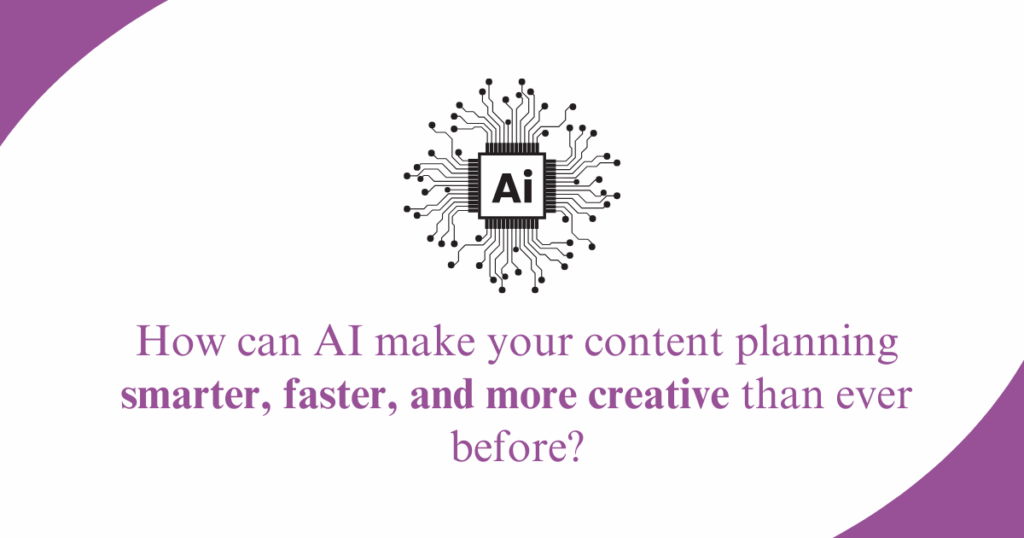
How AI Transforms the Content Calendar Process
Traditional content calendars require a lot of manual work: brainstorming ideas, drafting posts, researching hashtags, and then scheduling. While effective, it can feel overwhelming—especially if you’re managing multiple platforms at once.
This is where AI tools step in, reshaping how marketers, brands, and even small business owners approach content planning. Instead of being just a “calendar with dates,” AI-driven calendars become dynamic assistants that help with ideation, optimization, and execution.
1. AI for Idea Generation
The hardest part of running a content calendar is often answering: “What should we post this week?”
AI tools like Planpost AI, Jasper, or Copy.ai can generate post ideas based on:
- Your brand tone and audience.
- Trending keywords or hashtags.
- Seasonal events and industry news.
Example: If you run a coffee shop, AI might suggest posts around “Back-to-school energy boosts,” “Autumn pumpkin latte season,” or “Customer spotlight: favourite orders.”
2. AI for Content Drafting
Writing captions and blog snippets can take hours. AI helps by:
- Drafting caption variations (short, long, playful, professional).
- Creating headlines or hooks for carousels and videos.
- Repurposing one piece of content (e.g., a blog) into multiple social snippets.
Instead of staring at a blank screen, you start with ready-to-polish drafts.
3. AI-Powered Scheduling
One of the biggest strengths of AI calendars is smart scheduling. Tools can analyse:
- When your followers are most active.
- What times bring the highest engagement.
- Which days work best for different types of posts.
This means your calendar isn’t just consistent—it’s also optimised for reach and impact.
4. Hashtag & Keyword Suggestions
Manually researching hashtags is time-consuming. AI tools can instantly generate:
- Relevant hashtags for each post.
- Keyword sets that improve visibility.
- Mixes of broad vs niche hashtags to balance reach and community building.
5. Predictive Performance Insights
Some advanced AI platforms now predict how well a post will perform before it even goes live.
They score your captions, visuals, and posting time—helping you tweak content in advance.
Imagine knowing in advance that a Reel idea is likely to outperform a static image, or that posting on Thursday afternoon will give 25% more engagement. That’s the power of predictive AI.
6. Workflow Automation
Nowadays, AI-driven calendars also handle repetitive admin. Like:
- Auto-tagging posts by theme or campaign.
- Notifying team members for approval.
- Recommending re-posts of high-performing content.
This shifts your energy from micro-managing to big-picture strategy.
7. Learning from Results
You need to know, Unlike static spreadsheets, AI-powered calendars learn from your performance. Over time, they:
- Identify which content pillars resonate most.
- Refine posting times.
- Suggest new angles based on what worked best.
The calendar grows smarter, making each month more effective than the last.

Step-by-Step Guide to Building an AI-Powered Content Calendar
It’s one thing to know the benefits of AI, but the real magic comes when you put it into action. Here’s a step-by-step framework you can follow to build your own AI-driven content calendar — whether you’re a solo entrepreneur, a marketing manager, or running an agency.
Step 1: Define Your Content Goals
Before AI can help, you need clarity on why you’re posting. Ask yourself:
- Do I want to build brand awareness?
- Drive traffic to my website?
- Boost sales or sign-ups?
- Strengthen community engagement?
AI works best when it knows your end goal — because it can generate content tailored to it.
Step 2: Choose Your AI Tool
There are several AI tools that specialise in different parts of the process:
- Planpost AI → automation, scheduling, and post repurposing.
- Jasper / Copy.ai → content generation.
- Canva Magic Write → visual + copy creation.
- Buffer / Hootsuite with AI add-ons → analytics & publishing.
Pick one or two that fit your needs rather than overwhelming yourself with too many.
Step 3: Brainstorm Content Pillars with AI
Content pillars are the “themes” you consistently talk about.
Example for a fitness coach:
- Workouts
- Nutrition tips
- Motivation / Mindset
- Client success stories
Feed these into your AI tool, and it will generate:
- Topic ideas (“5 Quick Post-Workout Meals”)
- Post formats (Reels, carousels, quotes)
- Engagement hooks (“What’s your go-to breakfast after training?”)
Step 4: Create a Draft Calendar
Once you have ideas, let AI arrange them into a calendar view.
For example:
- Monday → Motivational quote
- Wednesday → Educational carousel
- Friday → Behind-the-scenes Reel
- Sunday → Poll or question to engage
AI tools can suggest the best posting days and times based on your audience insights.
Step 5: Generate Captions & Visuals
Use AI to:
- Draft 2–3 variations of captions (choose the one that fits).
- Suggest emojis, hashtags, or CTAs.
- Create or enhance visuals (using Canva AI or MidJourney).
This gives you a ready-to-edit batch instead of writing everything from scratch.
Step 6: Automate Scheduling
Upload your approved posts into your AI-powered scheduler (Planpost AI, Buffer, Later, etc.).
AI will:
- Auto-schedule for peak times.
- Re-share high-performing posts.
- Even pause posts if trending events make them feel out of place.
Step 7: Measure & Optimise
AI tools don’t just publish — they track results.
Check metrics like:
- Engagement rate
- Reach & impressions
- Click-throughs
- Conversions
Then let AI recommend what to repeat, tweak, or drop next month.
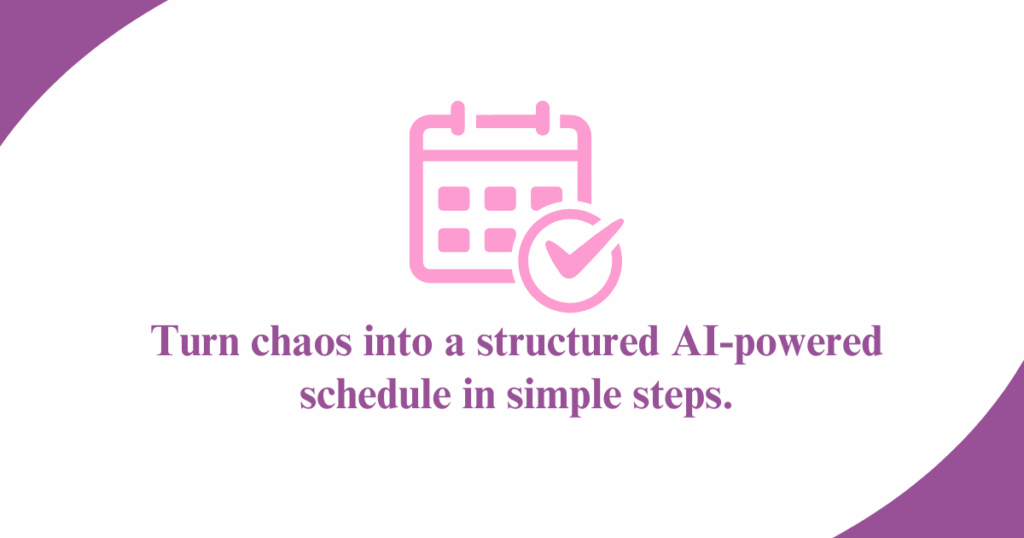
Real-World Examples of AI-Powered Content Calendars in Action
Sometimes the best way to understand how AI can help is to see how others are already using it. Below are some practical case studies (inspired by real brand practices) that show how AI content calendars transform social media.
Example 1: The Small Business Owner – Handmade Jewellery Brand
Challenge:
Sophie runs a small handmade jewellery shop in Brighton. She wanted to post regularly but always ran out of time to plan, write captions, and create visuals.
How AI Helped:
- Used Planpost AI to generate weekly post ideas around “behind-the-scenes making,” “customer reviews,” and “seasonal product launches.”
- AI auto-scheduled posts for evenings (when her audience was most active).
- Captions were drafted with emojis and calls-to-action like “Tag a friend who’d love this necklace!”
Result:
- Saved 10+ hours a week.
- Instagram engagement increased by 35% in 3 months.
- Consistent posting helped her get featured in a local lifestyle magazine.
Example 2: The Marketing Agency – Managing Multiple Clients
Challenge:
A digital agency managing 12 clients struggled with keeping up-to-date content calendars for each one. Their team was drowning in spreadsheets and manual scheduling.
How AI Helped:
- Integrated AI scheduling + content generation.
- Each client got a customised content calendar aligned with their brand voice.
- AI flagged underperforming content and suggested new variations.
Result:
- Agency reduced content planning time by 50%.
- Clients saw more consistent posting, leading to higher retention.
- Agency could scale to 5 more clients without hiring extra staff.
Example 3: The Influencer – Lifestyle Blogger
Challenge:
Mark, a UK lifestyle blogger, wanted to grow his TikTok and Instagram presence but struggled with balancing daily content ideas and keeping posts consistent.
How AI Helped:
- Used AI brainstorming tools for daily Reels and Stories ideas.
- Automatically repurposed long-form YouTube videos into Instagram captions and TikTok scripts.
- AI calendar suggested alternating between tutorials, humour clips, and personal stories to keep variety.
Result:
- Gained 20,000 new followers in 6 months.
- Brand collaborations increased since he could show brands a professional-looking content calendar.
- His workload dropped while his posting frequency doubled.
Example 4: The E-Commerce Brand – Online Clothing Store
Challenge:
An online fashion retailer needed to align product launches, promotions, and seasonal campaigns with social posts — but often missed key dates.
How AI Helped:
- AI-generated a 12-month content calendar aligned with UK holidays, shopping seasons (Black Friday, Christmas, Summer Sales).
- Auto-scheduled product teasers, launch countdowns, and customer spotlights.
- Integrated ROI tracking: which posts actually led to sales.
Result:
- Online sales increased by 27% during seasonal campaigns.
- Zero “last-minute” scramble posts.
- The marketing team spent more time on creative campaigns instead of admin.
✅ These examples show that AI calendars aren’t just for “tech giants.” Whether you’re a small shop, agency, influencer, or e-commerce brand, AI adapts to your workflow.
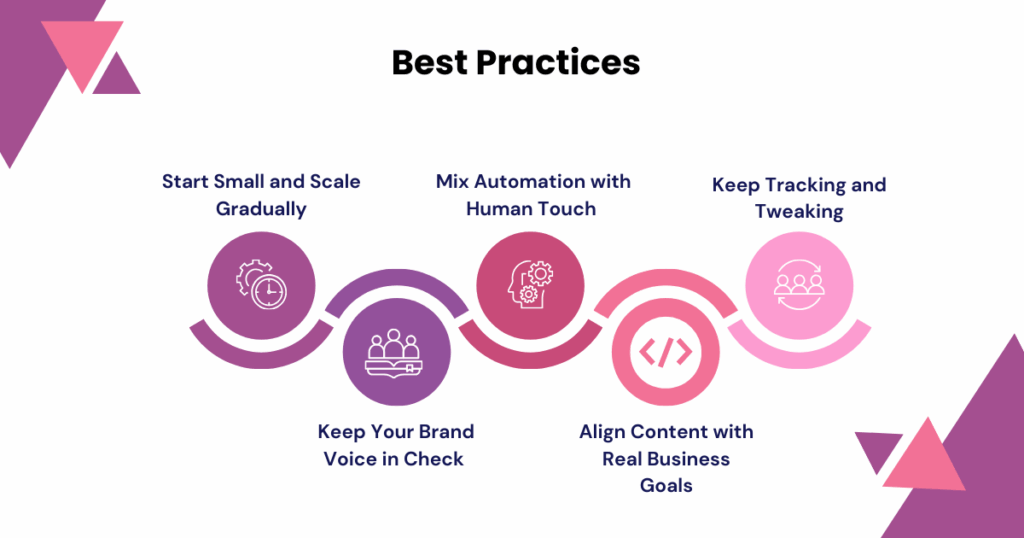
Best Practices & Mistakes to Avoid When Using AI Calendars
Using AI for your content calendar can feel like having a personal assistant — one that never forgets deadlines, knows your audience better than you do, and keeps everything organised. But just like any tool, it works best when you use it wisely. Let’s break down the best practices and the pitfalls to avoid so you don’t stumble.
✅ Best Practices
1. Start Small and Scale Gradually
Don’t feel pressured to automate everything on day one. Begin by letting AI handle a week’s worth of posts or just your captions. Once you’re comfortable, expand into scheduling, repurposing, and analytics.
2. Keep Your Brand Voice in Check
AI is smart, but it doesn’t know your personality unless you teach it. Feed it examples of your style — casual, professional, witty, heartfelt — so the captions it generates sound like you, not a robot.
3. Mix Automation with Human Touch
Think of AI as your drafts assistant, not your replacement. Use it to create ideas and structure, but always review and polish before posting. This keeps your content fresh and authentic.
4. Align Content with Real Business Goals
Your calendar isn’t just about “being consistent.” It should serve your bigger goals — sales, leads, awareness, or community engagement. Make sure AI scheduling ties into product launches, seasonal events, or campaigns.
5. Keep Tracking and Tweaking
AI tools often come with analytics dashboards. Pay attention. Notice which posts bring the most clicks, saves, or sales — then let AI adjust the schedule based on those insights.
❌ Mistakes to Avoid
1. Over-Automating and Sounding Robotic
If you rely too heavily on AI without editing, your captions can feel generic. Audiences connect with emotion, not perfectly polished machine text. Always personalise.
2. Ignoring Audience Time Zones
Posting at 9 a.m. London time might work for a UK-based brand, but if your followers are global, you’ll miss out. Let AI recommend best times but adjust for your audience’s geography.
3. Forgetting to Inject Spontaneity
AI calendars thrive on structure, but social media is also about “in the moment.” Don’t lose flexibility — sprinkle in real-time updates, behind-the-scenes snaps, or trending topics.
4. Not Reviewing Suggested Content
AI can suggest great ideas, but sometimes it may pull something irrelevant or slightly off-brand. Skipping a quick review can lead to embarrassing posts.
5. Using the Same Formula Forever
What works today won’t always work tomorrow. Social media evolves quickly. Refresh your prompts, update your AI calendar, and stay open to experimenting.
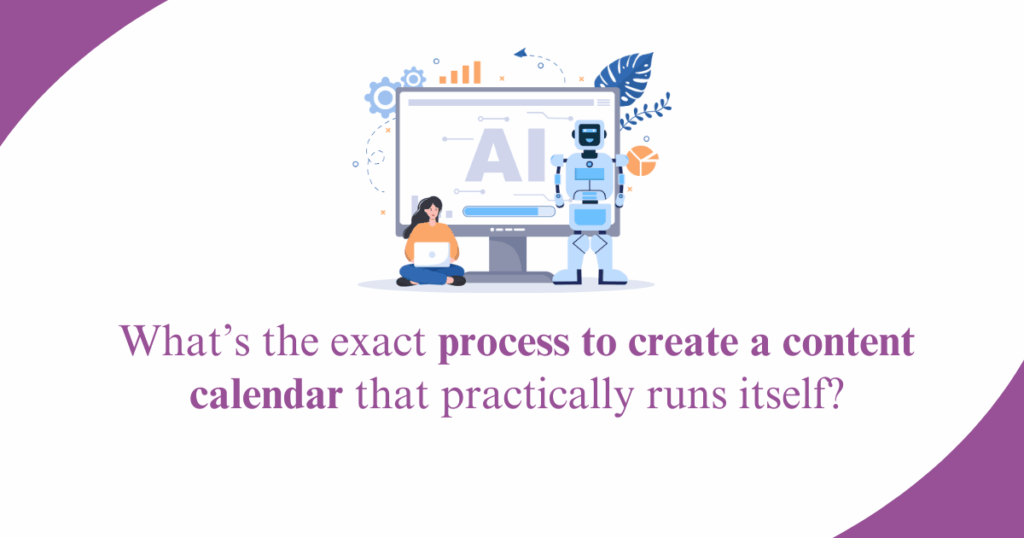
Step-by-Step Guide to Building Your AI Content Calendar
So, you’re ready to actually build your AI-powered content calendar? Perfect. Think of this section as your hands-on guide. Grab a notebook (or your favourite project tool) and let’s walk through it together.
Step 1: Define Your Goals First
Before you even open an AI tool, ask yourself: What do I want from my social media this month?
- More followers?
- More clicks to my website?
- More sales of a new product?
👉 Write down one primary goal and one secondary goal. AI can generate better ideas when it knows your direction.
Step 2: Choose Your Core Platforms
Don’t try to be everywhere at once. Pick the 2–3 platforms where your audience hangs out the most.
- Instagram for visuals
- LinkedIn for B2B
- TikTok for trends
- X (Twitter) for conversation
👉 Once you’ve decided, tell your AI tool which platforms matter so it can tailor content to each.
Step 3: Gather Your Key Content Themes
Instead of reinventing the wheel every week, create 3–5 themes you’ll rotate through.
Examples:
- Educational tips
- Behind-the-scenes moments
- Customer stories
- Product highlights
- Seasonal campaigns
👉 Feed these themes into your AI tool. It will generate post ideas under each bucket.
Step 4: Use AI to Draft Post Ideas
This is where the fun starts. Ask your AI tool something like:
“Generate 10 Instagram post ideas about eco-friendly home décor that inspire engagement.”
Within seconds, you’ll have a list of hooks, captions, and even hashtag suggestions.
👉 Don’t just copy — pick the best ones and tweak them to fit your brand voice.
Step 5: Map Out a Monthly Calendar
Now, slot those ideas into a 30-day view. AI scheduling tools can suggest best times to post, based on your audience’s activity.
For example:
- Mondays: Educational tip
- Wednesdays: Product feature
- Fridays: Fun/trending post
👉 The goal is consistency without burnout.
Step 6: Automate Scheduling
Once you’ve reviewed and polished the posts, let AI do the heavy lifting. Tools like Planpost AI, Buffer, or Later can queue up your content and post it at peak times.
👉 This frees you from babysitting your socials every day.
Step 7: Track, Measure, and Refine
At the end of the month, look at the results. Which posts got the most engagement? Which drove traffic or sales?
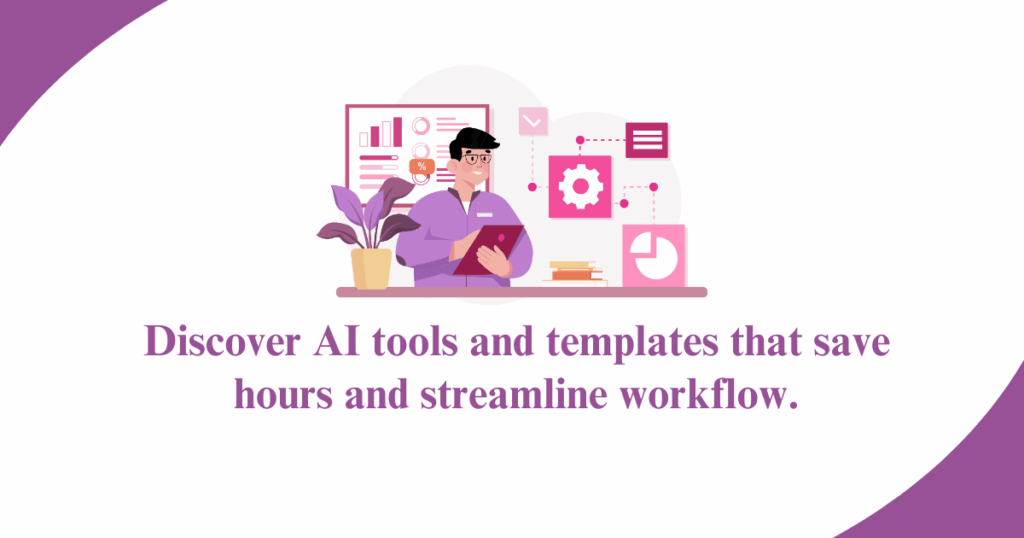
AI Tools & Templates You Can Use Right Now for Your Content Calendar
AI is only as powerful as the tools you choose. Here’s a curated list of platforms and templates to make your content calendar efficient, creative, and human-friendly.
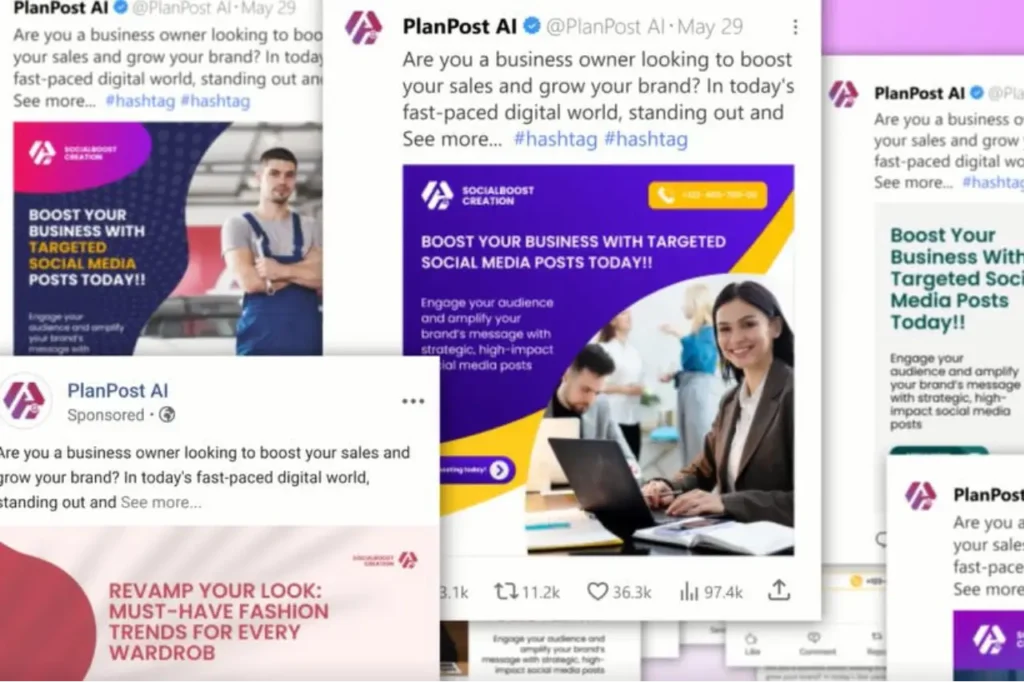
1. PlanPost AI – The All-in-One Scheduler
What it does:
- Generates post ideas based on your niche
- Drafts captions and hashtags
- Schedules posts across multiple platforms
- Provides analytics and performance tracking
Best for: Small business owners and social media managers who want an end-to-end AI assistant.
Start by letting PlanPost AI handle captions and hashtags, then gradually use its scheduling and analytics features.
2. Jasper AI – AI Copywriting for Social Media
What it does:
- Creates captions, tweets, LinkedIn posts, and blog snippets
- Offers creative prompts for engagement
- Can generate multiple post variations in seconds
Best for: Brands or creators who need fresh ideas daily without spending hours writing.
Pro tip: Always review Jasper’s suggestions to maintain your brand voice and tweak tone for your audience.
3. Canva AI – Visual Content Made Easy
What it does:
- Designs social media visuals, carousels, and stories
- Magic Write helps create text overlays or captions
- Templates make content production faster
Best for: Visual-first platforms like Instagram, Pinterest, and TikTok.
Pro tip: Pair Canva AI with PlanPost AI for a complete content + design workflow.
4. Buffer / Hootsuite with AI Integration
What it does:
- Schedules and publishes posts across platforms
- Suggests best posting times based on engagement data
- Tracks performance metrics like clicks, shares, and likes
Best for: Teams or agencies that need analytics-driven scheduling alongside AI-generated content.
Pro tip: Use the analytics dashboard to refine AI-generated ideas and posting times.
5. Notion / Trello Templates + AI
What it does:
- Helps you plan content visually with boards or tables
- AI integrations can suggest post ideas, captions, or hashtags
- Perfect for collaborative content planning
Best for: Teams that want flexible, customisable calendars with AI support.
Pro tip: Link content ideas directly to AI-generated drafts in the same workspace for efficiency.
Bonus: Pre-Built AI Calendar Templates
Some platforms offer ready-to-use content calendar templates you can customise:
- HubSpot Social Media Calendar Template → Excel / Google Sheets format
- Later Content Calendar Template → Drag-and-drop visual calendar
- PlanPost AI Templates → Monthly or weekly AI-generated suggestions
Pro tip: Start with a template to save time, then personalise with your brand’s voice and goals.
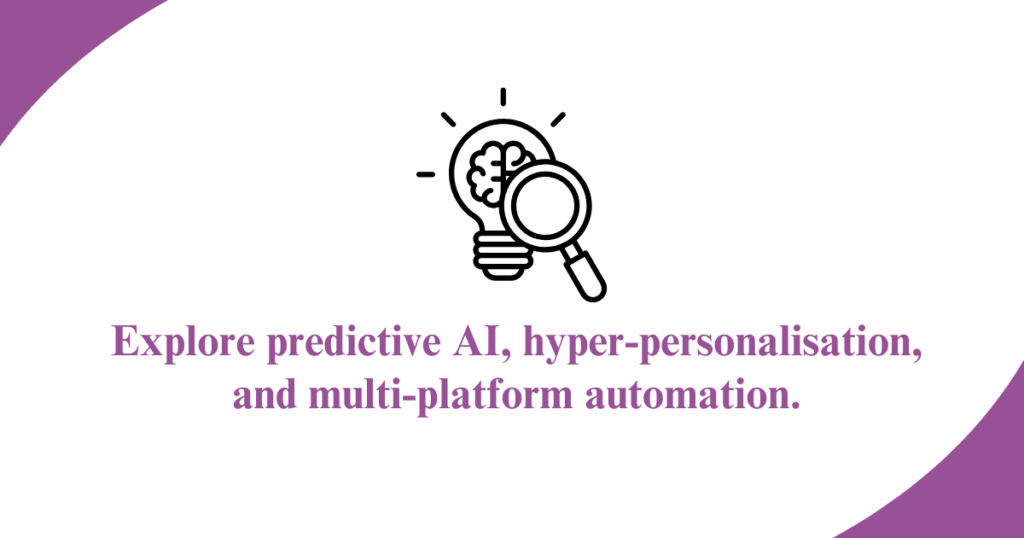
Measuring Performance & ROI of Your AI Content Calendar
Creating an AI-powered content calendar is one thing — knowing whether it’s actually working is another. Measuring performance ensures your efforts translate into real engagement, leads, and sales, not just posts on a schedule.
1. Define Key Metrics First
Before you dive into numbers, decide which Key Performance Indicators (KPIs) matter most for your brand:
- Engagement Metrics: Likes, shares, comments, saves, and overall interactions.
- Reach & Impressions: How many people see your posts and how often.
- Click-Through Rates (CTR): Traffic driven from social posts to your website or landing pages.
- Conversions / Sales: Number of sign-ups, purchases, or downloads attributed to social posts.
- Follower Growth: Indicates overall brand interest and audience expansion.
Pro tip: Use AI analytics dashboards (like in PlanPost AI, Buffer, or Hootsuite) to track these metrics automatically.
2. Track Performance by Content Pillar
Not all posts are equal. Break down performance by content themes:
- Educational posts
- Product highlights
- Behind-the-scenes
- User-generated content
AI tools can analyse which pillars perform best, helping you double down on winning content and refine weaker areas.
3. Analyse Timing & Frequency
AI calendars can recommend optimal posting times, but data will tell you what really works:
- Does posting at 9 a.m. get more engagement than 5 p.m.?
- Are weekends better for video content?
Use AI-generated reports to adjust your posting schedule and increase ROI.
4. Measure ROI
Social media ROI is more than likes. Calculate it by linking your posts to tangible results:

This shows a 400% return — proving AI calendars aren’t just convenient, they’re profitable.
5. Use AI for Predictive Insights
Advanced AI tools can:
- Predict which upcoming posts are likely to perform best.
- Suggest tweaks to improve CTR or engagement.
- Flag underperforming content early so you can adjust strategy.
Pro tip: Combine predictive insights with your actual results for continuous improvement.
6. Regularly Refine Your Calendar
Once a month, review analytics, engagement patterns, and ROI. Update your calendar for the next month:
- Swap low-performing post types for higher-performing ones.
- Adjust posting times and frequency.
- Let AI help generate fresh ideas for new trends.
This iterative process ensures your calendar stays relevant and profitable.
✅ Measuring performance closes the loop: you’re not just scheduling content — you’re building a smarter, results-driven social media strategy.
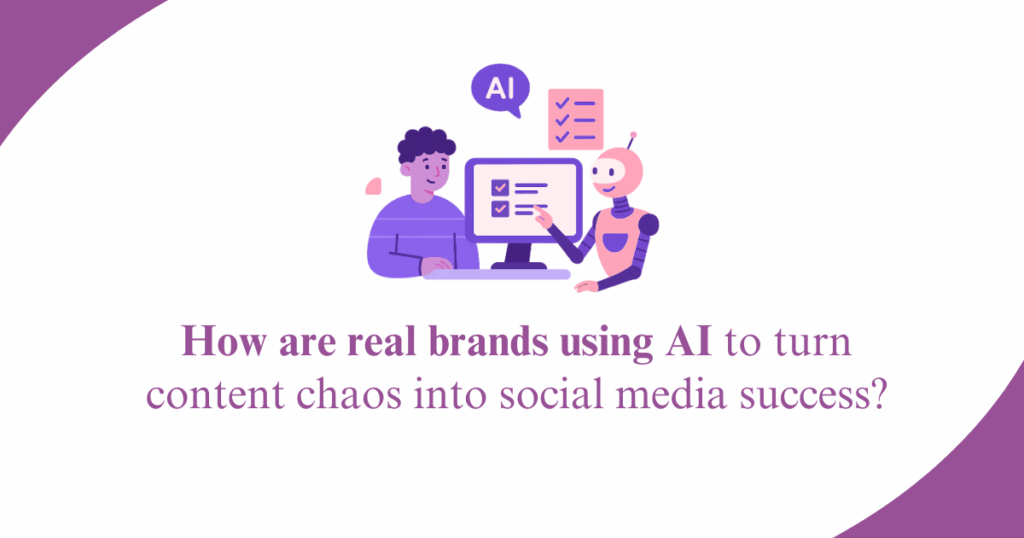
Future Trends — What’s Next for AI in Social Media Content Calendar
AI in social media isn’t just a passing trend — it’s evolving fast. The calendars you use today are powerful, but the tools of 2025 and beyond promise even more automation, insight, and creative freedom. Here’s what you can expect.
1. Predictive Posting Gets Smarter
Today, AI suggests the best times to post based on historical data. Tomorrow, predictive AI will factor in:
- Upcoming trends and viral topics
- Audience mood and behaviour changes
- Competitor activity
This means your posts won’t just go out at “usual peak times” — they’ll hit your audience exactly when engagement is likely to spike.
2. Fully Automated Multi-Platform Campaigns
Instead of creating content for each platform individually, AI will automatically:
- Adapt a single post to fit Instagram, TikTok, LinkedIn, and X formats
- Resize visuals and reformat captions
- Adjust hashtags and tone for each audience segment
One campaign could now run seamlessly across multiple platforms without manual intervention.
3. Hyper-Personalisation
AI will allow content to feel even more personal to your followers:
- Posts tailored to micro-audiences within your overall audience
- Dynamic messaging based on engagement history
- AI-driven polls or interactive content that adapts in real-time
This kind of hyper-personalisation could dramatically increase engagement and loyalty.
4. AI Collaboration With Human Creativity
Despite all the automation, humans will still set the vision and tone. Future AI tools will act more like co-creators than just assistants:
- Suggest creative directions
- Draft multiple iterations of campaigns
- Offer performance-based tweaks in real-time
The balance between AI efficiency and human creativity will be the secret to standout content.
5. Integrated Analytics & ROI Forecasting
AI dashboards will evolve to give predictive ROI insights, not just historical metrics:
- Forecast engagement and conversions before posts go live
- Recommend budget allocation for paid campaigns
- Highlight which content types will likely drive revenue
Marketers will be able to plan campaigns with confidence backed by data-driven predictions.
6. Voice & Video AI Integration
Beyond text and static images, AI calendars will increasingly handle:
- Video editing for short-form content
- Voiceovers and AI-generated audio for Reels, TikToks, and Stories
- Automated captions and subtitles
Your calendar won’t just schedule posts; it will create fully-formed, multi-sensory content pieces.
7. Ethics and Transparency
As AI becomes more autonomous, brands will need to:
- Ensure content is ethically generated
- Avoid deepfakes or misleading posts
- Maintain authenticity and trust
AI will be powerful, but human oversight will remain essential to brand integrity.
Actionable Steps for creating Social Media Content Calendar
Building a social media content calendar using AI tools isn’t just about saving time — it’s about working smarter, staying consistent, and connecting with your audience in meaningful ways.
Through this guide, we’ve covered:
- What a content calendar is and why it’s essential
- The key elements that make a calendar effective
- How AI transforms ideation, scheduling, captions, hashtags, and analytics
- Practical steps to build your own AI-powered calendar
- Tools, templates, and best practices to maximise efficiency
- Real-world examples showing AI in action
- Future trends that will shape AI calendars in 2025 and beyond
Actionable Steps to Get Started Today
- Define Your Goals: Know exactly what you want your social media to achieve this month. Engagement, sales, or website traffic? Write it down.
- Pick One AI Tool to Start: Whether it’s PlanPost AI, Jasper, or Canva, start small. Learn one tool deeply rather than juggling multiple platforms.
- Create 3–5 Content Pillars: These are your thematic building blocks. Feed them to AI to generate ideas efficiently.
- Draft Your Calendar for the Month: Slot AI-generated content into days, assign platforms, and review.
- Automate Scheduling & Hashtags: Let AI handle posting and optimisation.
- Track Performance: Use AI dashboards to monitor engagement, reach, and conversions. Refine next month’s plan based on results.
- Blend Human Creativity with AI: Always review, tweak, and add a personal touch. Authenticity is irreplaceable.
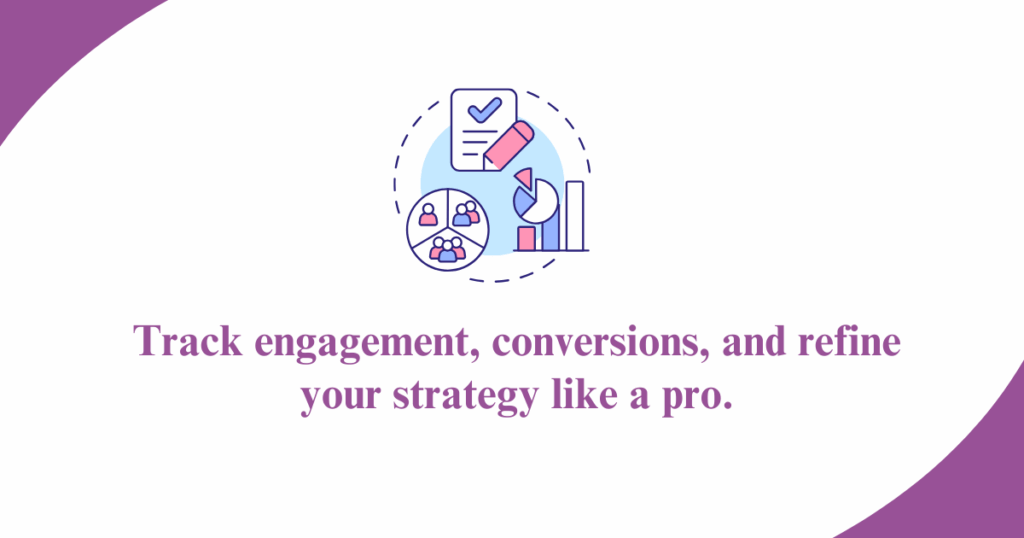
Final Thoughts
AI tools aren’t replacing marketers — they’re amplifying your abilities. They take care of the repetitive, time-consuming tasks, so you can focus on strategy, creativity, and authentic engagement.
Start with a single platform, experiment with AI-generated content, and gradually expand. Within a few weeks, you’ll notice higher consistency, smarter posting, and better results.
Your audience will see a brand that’s active, relevant, and engaging — all without the last-minute stress that comes with traditional planning.
